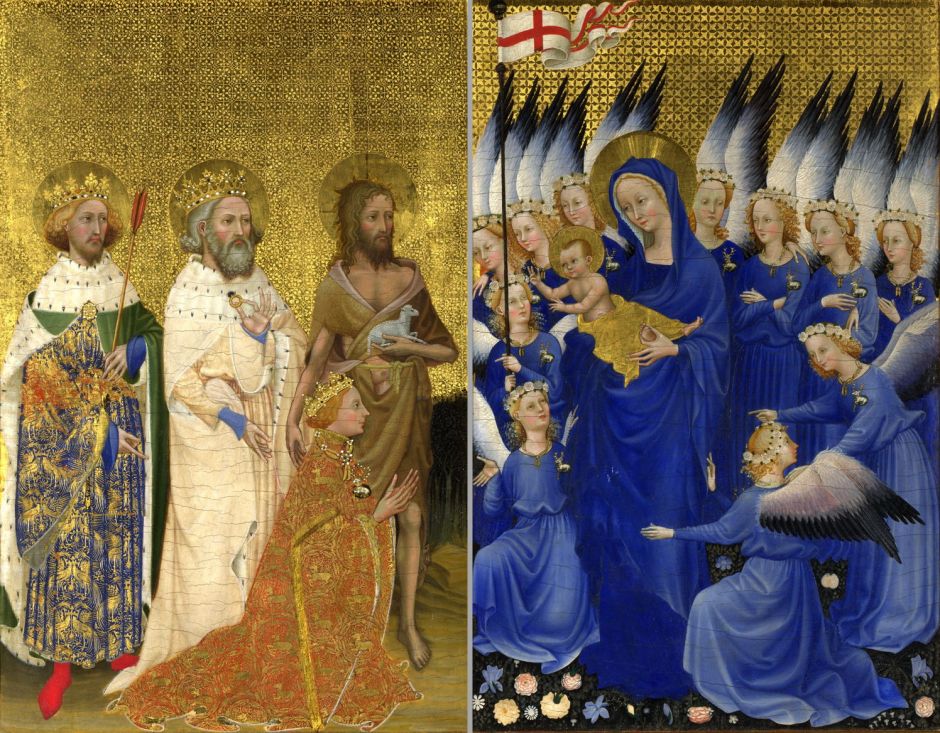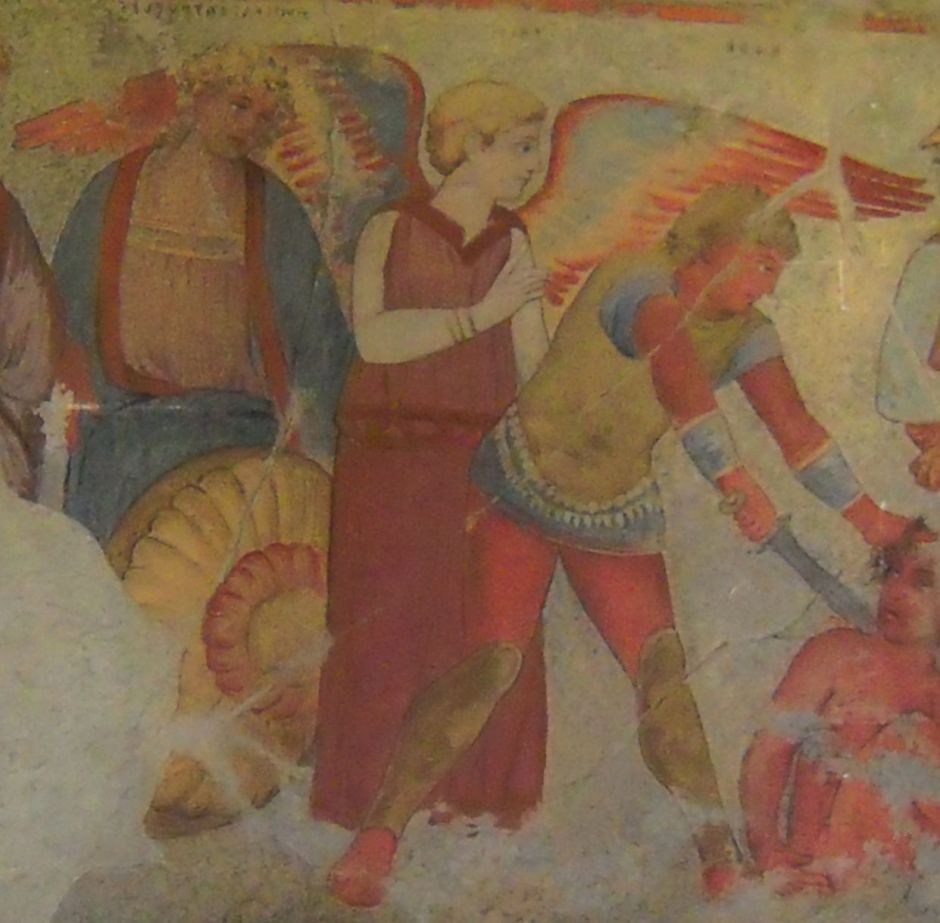We all know that angels have wings. It’s the most distinctive of their features, and is pervasive in paintings. In this article, I consider how that might have come about, by going back through visual history, as recorded in paintings and other art, to Old Babylonian civilisation in about 2000 BCE, four millennia ago.

Depictions such as Horace Vernet’s The Angel of Death (1851, below) and Marianne Stokes’ Death and the Maiden (1908, above) were only too familiar to many Christian families across Europe during the nineteenth and twentieth centuries, just as they must have been to the Etruscans, Greeks, and Trojans long before. Unlike most older Christian religious paintings of angels, both of these refer specifically to the angel of death, with links that I’ll make later to pre-Christian gods such as the Greek Thanatos and the Etruscan Vanth.


Hieronymus Bosch’s panel Ascent of the Blessed is one of the four making up his Visions of the Hereafter (c 1505-15), with particularly original and beautiful winged angels.
These wings enable clear distinction to be made between humans and other human-like creatures, and the messengers of God. Being messengers, just as older gods like Eros, Thanatos, and Vanth before them, there’s a feasible rationale for them requiring their wings in order to move swiftly from heaven or the pre-Christian underworld to earth, and in their duties on earth.

The wings of angels often formed key elements in paintings, as in the sublime Wilton Diptych painted in about 1395-9, where they impose a rhythm.

Winged angels go back further to the few Moslem miniatures showing angels. This painting of The Archangel Israfil by Zakariya al-Qazwini from 1280 is even more cross-faith, as a Moslem depiction of an Old Testament (Israelite Jewish) angel following this Christian tradition.

This breathtaking mosaic in the vault of the chapel of San Zeno, in Santa Prassede, Rome, from 817-824 CE, shows them very clearly, as does every painting of the Annunciation.
But nowhere in the Old or New Testaments (nor in any of the apocryphal writings, I think) are the angels of the Israelites or of Christians described as being winged. Cherubim (the plural of cherub) and seraphim were, but not angels. The few depictions of angels in the Christian tradition to around 390 CE omitted wings too, although I’ve been unable to locate a suitable image to illustrate this.
Then, between about 390 and 400, they suddenly acquired wings, and by 600 CE wings had become universal.
If you know your Greek deities, you’ll recall that the goddess of victory, Nike, and the gods Eros (love and life) and Thanatos (death) were usually shown as human bodies with angelic wings. So it would seem an easy step to suggest that the early Christians simply borrowed this pre-Christian symbolism when they developed the first depictions of Christian angels.

Piero della Francesca’s fresco showing Cupid Blindfolded (1452-66) illustrates the ancient and long-lived saying that love is blind, while conforming to the Roman concept of Cupid as an infant archer with spectacular wings.

The oldest visual art showing Eros/Cupid depicts him as a winged young man, here on this Attic red-figure bobbin from about 470-450 BCE.

Vanth (detail below) and Charun have been identified as the Etruscan deities associated with death. They are often seen as a couple, accompanying those who have just died, or are about to die, as are these unfortunate young Trojans.


Vanth is by no means the only Etruscan deity to come with wings attached, although she’s probably the most consistently winged. In this wall painting of Typhon, from much later, around 150 BCE when the Etruscans had been assimilated into the Roman Empire, the Greek monster Typhon has acquired wings in his Etruscan form.

Winged female deities go back much further than even the Greeks, with the likes of the Mesopotamian Ishtar, shown here incised into the terracotta of the Ishtar Vase which may date to as early as 2000 BCE.

More detailed and sophisticated, the famous Burney Relief shows Ishtar too, and has been more confidently dated to Old Babylonian times, around 1800 BCE.
Ishtar of the Babylonians was Inanna to the Sumerians from around 4000 BCE, and as the goddess of love, war and fertility was the ancestor of the Greek Aphrodite and Roman Venus, mother of Eros/Cupid.
Thus the visual history starts in the early civilisations of the Fertile Crescent, is transmitted through gods of death and love in the ancient Mediterranean cultures, is then adopted by early Christian artists around 400 CE, and survives to the present: messenger-gods, messengers of the gods, and the messengers of God.
References
Wikipedia on angels.
Wikipedia listing of Etruscan deities.
de Grummond NT (2006) Etruscan Myth, Sacred History, and Legend, University of Pennsylvania Museum. ISBN 978 1 931707 86 3.
Haynes S (2000) Etruscan Civilization. A Cultural History, J Paul Getty Museum. ISBN 978 0 892 36600 2.
Holliday PJ (1993) Narrative Structures in the François Tomb, pp 175-197 in Narrative and Event in Ancient Art, ed Holliday PJ, Cambridge UP. ISBN 978 0 521 43013 5.
Lowenstam S (2008) As Witnessed by Images. The Trojan War Tradition in Greek and Etruscan Art, Johns Hopkins UP. ISBN 978 0 8018 8775 8.
Rouveret A (2015) Etruscan and Italic Tomb Painting c 400-200 BC, pp 238-287 in The Cambridge History of Painting in the Classical World, ed Pollitt JJ, Cambridge UP. ISBN 978 0 521 86591 3.

